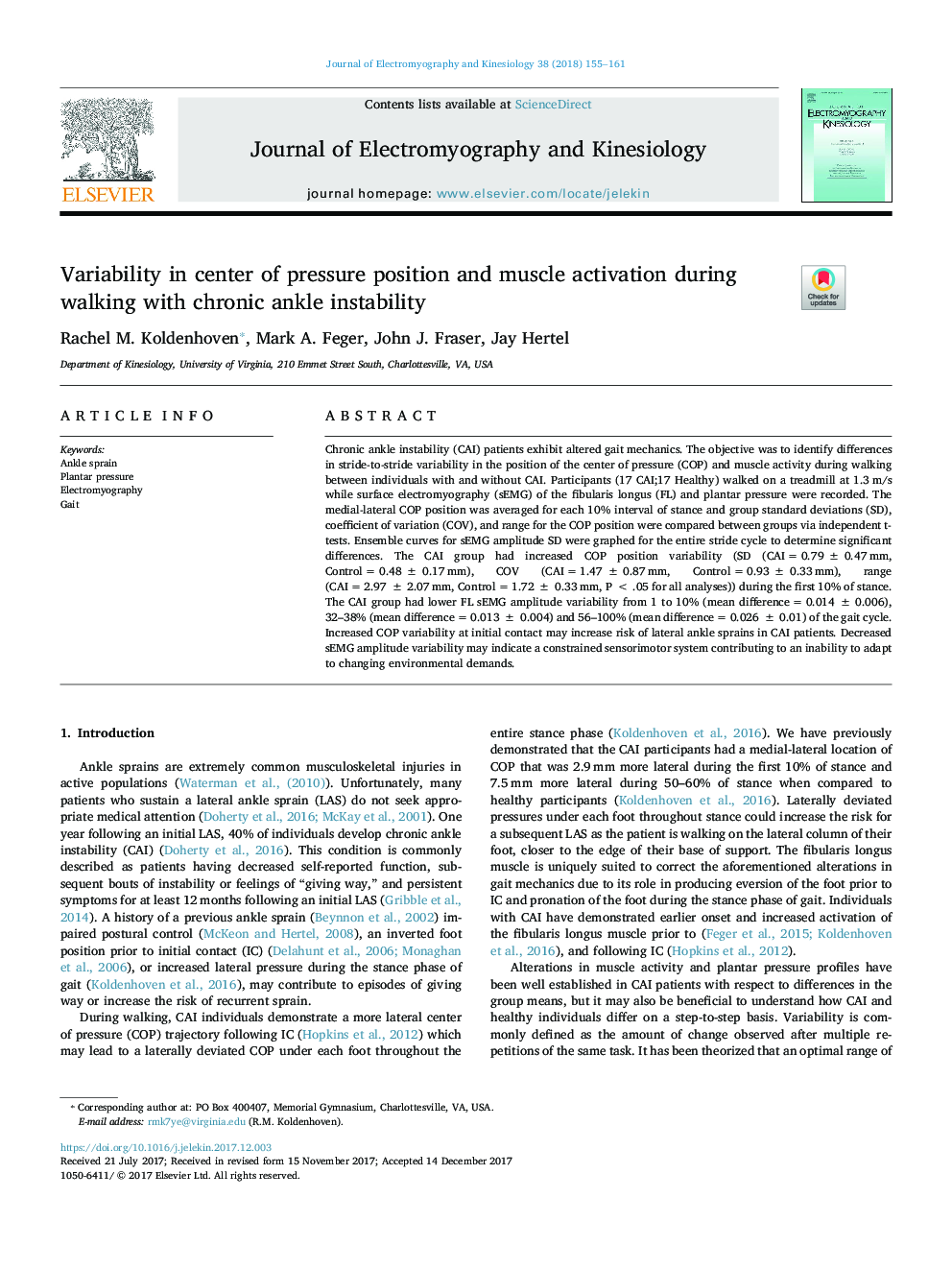| Article ID | Journal | Published Year | Pages | File Type |
|---|---|---|---|---|
| 8799835 | Journal of Electromyography and Kinesiology | 2018 | 7 Pages |
Abstract
Chronic ankle instability (CAI) patients exhibit altered gait mechanics. The objective was to identify differences in stride-to-stride variability in the position of the center of pressure (COP) and muscle activity during walking between individuals with and without CAI. Participants (17 CAI;17 Healthy) walked on a treadmill at 1.3â¯m/s while surface electromyography (sEMG) of the fibularis longus (FL) and plantar pressure were recorded. The medial-lateral COP position was averaged for each 10% interval of stance and group standard deviations (SD), coefficient of variation (COV), and range for the COP position were compared between groups via independent t-tests. Ensemble curves for sEMG amplitude SD were graphed for the entire stride cycle to determine significant differences. The CAI group had increased COP position variability (SD (CAIâ¯=â¯0.79â¯Â±â¯0.47â¯mm, Controlâ¯=â¯0.48â¯Â±â¯0.17â¯mm), COV (CAIâ¯=â¯1.47â¯Â±â¯0.87â¯mm, Controlâ¯=â¯0.93â¯Â±â¯0.33â¯mm), range (CAIâ¯=â¯2.97â¯Â±â¯2.07â¯mm, Controlâ¯=â¯1.72â¯Â±â¯0.33â¯mm, Pâ¯<â¯.05 for all analyses)) during the first 10% of stance. The CAI group had lower FL sEMG amplitude variability from 1 to 10% (mean differenceâ¯=â¯0.014â¯Â±â¯0.006), 32-38% (mean differenceâ¯=â¯0.013â¯Â±â¯0.004) and 56-100% (mean differenceâ¯=â¯0.026â¯Â±â¯0.01) of the gait cycle. Increased COP variability at initial contact may increase risk of lateral ankle sprains in CAI patients. Decreased sEMG amplitude variability may indicate a constrained sensorimotor system contributing to an inability to adapt to changing environmental demands.
Related Topics
Health Sciences
Medicine and Dentistry
Orthopedics, Sports Medicine and Rehabilitation
Authors
Rachel M. Koldenhoven, Mark A. Feger, John J. Fraser, Jay Hertel,
